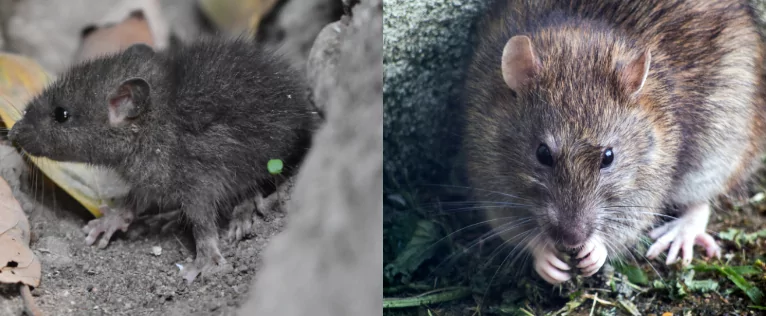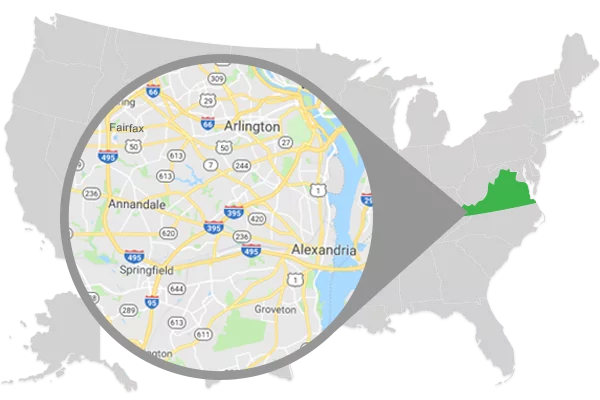What to know about mice and rats
What is the difference between a mouse and a rat?
Mice and rats or murids, are members of the largest family of rodents. There are approximately 700 species of rodents to include mice, rats and gerbils and their subspecies.

The most noticable difference between mice and rats is their size. Mice tend to be significantly smaller than rats. Rats can be black, brown, gray or white and have long hairless or even scaly-feeling tails. Mice are typically brown, gray or white and tails that are long, thin and hairy. Mice have triangular-shaped snouts with long whiskers whereas rats have a blunt or rounded snout in comparison. Mice have large ears and eyes in comparison to their faces while rats have small ears and eyes in comparison to their faces. Both rats and mice are nocturnal, meaning they sleep during the day and are active during the evenings through the night. Mice are timid yet social and tend to be territorial. The lifespan of most mice is between one and half and two years and rats tend to live a bit longer, two to three years. Mice reproduce every 19-21 days and have anywhere from five to ten litters a year. Rats reproduce about five times a year and have a gestation period of 21 days. Litters can range in size from seven to fourteen baby rats. Mice and rats have poor eyesight, but make up for it with their exceptional memory. Rats and mice can figure out a path and will never forget it. They are intelligent, but can also pose problems and should not run rampant in your home.
How do I know I have mice or rats?
The easiest sign of mice or rats is finding their droppings. Mice produce between 40 and 100 droppings daily and rats produce between 20 and 50 per day. Droppings tend to be deposited near where the mouse or rat is living and most often near a source of food. Another way of determining whether you have an infestation is to find the damage they cause. Both will rip and shred paper and boxes and chew or gnaw on material like plastic, wood and even fabric. One other way is to actually see the mouse or rat, although this is a lot less common due to their nocturnal nature. Rats like to burrow in the foundation of homes or build their nests in attics. Rats produce an oil that leaves dark marks on places they have been. Both will make scratching and scurrying noises that can help identify them as a mouse or rat.
Why are these rodents harmful?
Besides causing structural damages, mice and rats can make a mess and spread infectious diseases. Mice and rat feces carry a lot of bacteria and parasites that can be harmful to people and their pets. The diseases the rats and mice carry can be airborne or caused by them biting humans or pets. Some diseases that are spread by both rats and mice are typhus, plague, hantavirus, rat-bite fever and salmonella. Additionally mice can contract and spread Lyme disease and rats can carry leptospirosis. People can also be allergic to mice and rat droppings and urine. An asthma attack can be triggered from exposure to the allergens. Another reason these rodents are harmful is because of the things they chew and gnaw on. As mentioned before, rats and mice will chew on all types of material but one of the most dangerous is wires. They will chew on wires, which is believed to result in about 25% of all house fires in the United States.
What to do with mice or rats
Some suggested preventative measures include installing a rat wall, sealing points of entry into the home, removing food and water and clearing clutter and debris. A rat wall is a barrier that is installed outside of a person’s home that prevents rats from burrowing into the foundation of the home or under a deck or patio. Rodenticide is the most common way of managing mice and rats. Poisoning wildlife in the state of Virginia is illegal, so it’s best to not accidentally poison squirrels and other wild animals. A professional pest control specialist should be contacted for a rodent control program in Alexandria and other surrounding areas. Some ways to get rid mice and rats are by both chemical and non- chemical procedures. Another way is through bait stations and traps and keeping them well monitored.Traps and bait stations can be used with or without rodenticide. Rodenticide will kill rodents but also all other mammals, including pets. During the removal process, pets and people need to stay away from the area where the rodent control is happening to ensure their safety.
During a rodent control inspection, a technician will work to find entry holes and locate the nest of the mice or rats. They will figure out the high traffic areas and assess the damage caused by them. The inspection is always free and we will give you an estimate for the pricing for the removal. If you choose Summit, we will create a rodent control treatment plan with necessary measures. A rodent control plan will be established in which a technician will set up traps with or without rodenticide depending on the case and situation although eradication without rodenticide is often a very difficult and time consuming process. Once the rodents are removed from the property, the necessary repairs to the home can be made. Summit is a whole home service and we focus on the removal, the repair and the restore of the home. We do everything from maintenance to clean up and restoration to damage repair. Some of the services we offer in addition to pest control and animal removal are basement waterproofing, crawl space encapsulations, insulation and repairs.
Here at Summit, we offer treatment plans for both mice and rats and will be happy to schedule a free pest control estimate for rodent control in Alexandria, Arlington, Fairfax and other nearby cities if you give us a call.












